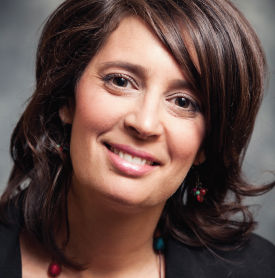The number of Canadians approaching retirement has tripled in five years, while low interest rates and volatile markets have continued to wreak havoc on their nerves.
Today, fund companies must compete to find ingenious ways to offer a rare commodity in this promising but wary marketplace: a steady retirement income.
Sun Life Global Investments (Canada) recently launched funds-of-funds as well as individual mutual funds aimed at generating income. Standard Life has launched a series of target liability bonds that are based on demographics in its group retirement plans, as well as some absolute return funds. Invesco is singing the praises of intelligent indexing as the best way to protect capital while BMO Asset Management is focusing on managing volatility with its new exchange traded funds (ETFs).
Anne Meloche, regional vice-president of Institutional Business for Quebec and Eastern Canada at Sun Life Global Investments believes that this trend towards stable income products will become more pronounced in both the individual and group mutual fund markets. There are two significant factors at work, namely the aging population and the ongoing economic situation.
The current demographic trend in Canada is telling. “Between 2007 and 2012, the number of Canadians aged 55 to 64 nearly tripled, increasing from 1.3 million to 3.7 million,” comments Ms. Meloche. In an interview with The Insurance and Investment Journal, she pointed out that 1000 Canadians reach the age of 65 each day. “These people who are approaching retirement age are looking for stable income.”
Still reeling
Burned by three crises in ten years, investors are still reeling from the crash of 2008, the deepest since the Great Depression of 1929. “Investors have changed their attitude to investing. They have fled to safer asset classes,” observes Ms. Meloche. “Fifty-seven percent of household savings are now invested in Canadian fixed income securities and term deposits.”
This quest for security now poses a problem for future retirees: how can you have a comfortable retirement on an income that is based on low interest rates? “Ten-year term deposits are currently paying around 2%. You have to go above the thirty year mark in order to get more than 2.5%.”
As a result, Sun Life Global Investments has expanded its Granite Managed Portfolio with the Sun Life Managed Income Portfolio and the Sun Life Managed Enhanced Income Portfolio. Led by Sadiq S. Adatia, chief investment officer and portfolio manager at Sun Life Global Investments, the management team’s mandate is to provide investors with a regular income from various sources. Ms. Meloche notes that the monthly distribution target is 4 to 5 cents per $10 of invested capital.
“These distributions correspond to an annual yield of 4.8% to 6%,” she explains. She says that the Sun Life funds aim to produce stable income with a multi-manager, multi-asset class approach, where the returns are obtained without sacrificing capital protection.
To achieve this goal, the team invests primarily in a combination of fixed income mutual funds and ETFs, as well as income-generating shares. The investment risk is between low and moderate and the team manages investments with a medium to long-term time horizon, spread over a broad range of asset classes and geographic locations.
The base index of Sun Life’s Granite Managed Income Portfolio fund-of-funds consists of 35% weighting in the BC Global Aggregate Index, 25% in the DEX Universe Bond Index, 20% in the S&P/TSX Capped Composite, and 20% MSCI World Index. As for Sun’s Managed Enhanced Income Portfolio, it holds 30% percent of its assets in the S&P/TSX index, 20% in the MSCI World, 20% in the BC Global Aggregate, 15% in the BoA/ML HY U.S. Bond Index and 15% in the JPM EMBI Global Diversified Index. The last two are partially hedged in Canadian dollars.
Ms. Meloche say that some of these new individual mutual funds will become available within Sun Life’s group plans in the coming months. “Sun Life Financial is thinking about adding these new income funds to its existing segregated fund lineup,” she says. Sun Life Global Investments does not offer segregated funds to its customers but many of its mutual funds are available as seg funds through Sun Life Financial.
Michael Cooke, head of distribution at PowerShares Canada, a subsidiary of Invesco, is calling for an intelligent approach to fixed income investing. In his opinion, the current economic environment requires that advisors take a new approach.
“The economic environment hasn’t made it necessarily easier for you. The recovery has been much slower than what we’ve seen historically, at 1.5% below trend for a decade following the credit crisis,” commented Mr. Cooke in a presentation in Toronto. “As a result, central banks remain committed to supporting this recovery through low interest rates and asset purchases. Many factors make it unlikely that we’ll see interest rates increase soon. Your challenge is to generate retirement income for your client in that environment.”
Mr. Cooke believes that advisors should be offering investors mutual funds and exchange-traded funds that “index” intelligently rather than an index fund that slavishly follows the market by holding all securities. For example, he says that intelligent indexing can limit volatility or systemic risk.
The funds are set up in such a way as to allow them to combine ETFs listed on U.S. markets with Canadian mutual funds. This structure also allows the 21 PowerShares Funds to offer access to markets that are often too expensive for the average investor, such as fixed income mandates as well as securities in niche global regions and sectors.
Making intelligent fixed income investments may also mean being able to adjust the client’s bond portfolio according to economic cycles. Mr. Cooke believes that products such as the PowerShares Tactical Bond Fund, Series A (RRSP) and the PowerShares Tactical Bond Capital Yield Class, Series A (a tax efficient fund) are well-suited to this role. He also puts the PowerShares Tactical Bond ETF on his list of possible solutions.
Mr. Cooke noted in his presentation that the two PowerShare mutual funds pay a trailer fee of 50 basis points (0.50%) and that the three products have accumulated assets totalling $370 million to date. Scott Wolle, chief investment officer at Invesco Global Asset Allocation, is behind these funds’ strategies and tactics.
Mr. Cooke believes that financial markets will be subject to high volatility in 2013, particularly when it comes to fixed income securities. One strategy is to keep some distance from the DEX Universe Bond Index by recreating it by using a series of ETFs. This way, the manager remains flexible. He can stick to the index, or he can change the weighting depending on market circumstances. He can also aim for a higher return compared to DEX, while maintaining a similar risk profile.
Alain Desbiens is vice president of sales for Eastern Canada at BMO Guardian Funds. He sees some drawbacks to intelligent indexing. “It is very popular in the United States but remains marginal in Canada,” he observes. He does not, however, reject the concept out of hand. “You just have to clarify what an intelligent index is. For us, it is equal weighting,” says Mr. Desbiens.
With equal weighting, the proportion of each security in a portfolio is identical. BMO uses this method to avoid some of the problems caused by market capitalization weighting, such as market inefficiency and irrational investor behavior.
Whatever the approach, the important thing is to keep it simple. “Many in the industry tend to over-complicate investment products while the trend in the market is towards greater transparency. The future belongs to those who simplify, popularize, and support their products with simple concepts and offer them at a reasonable cost,” comments Mr. Desbiens.
Mr. Desbiens notes that the current trend in ETFs is towards dividend funds, anti-volatility funds, and funds-of-funds. He also sees an increase in the popularity of ETFs that provide some exposure to U.S. equities and emerging markets. “We will see a lot of tax efficiency funds as well,” he predicts.
Mr. Desbiens also believes that it will be important to fight volatility in 2013, and thinks that BMO’s ETF products are well placed to do so. As Pat Chiefalo, director of Derivatives and Structured Products at National Bank Financial, pointed out in his annual report, BMO’s Low Volatility Canadian Equity ETF outperformed the TSX 60 in 2012.
In 2012, BMO dominated the Canadian ETF market in terms of new assets for the second consecutive year. In fact, BMO’s ETFs accounted for 40% of total market inflows last year in Canada. Its assets increased 130% during this period, reaching $5 billion. At the end of January, BMO’s had 40 different ETFs in its lineup.








